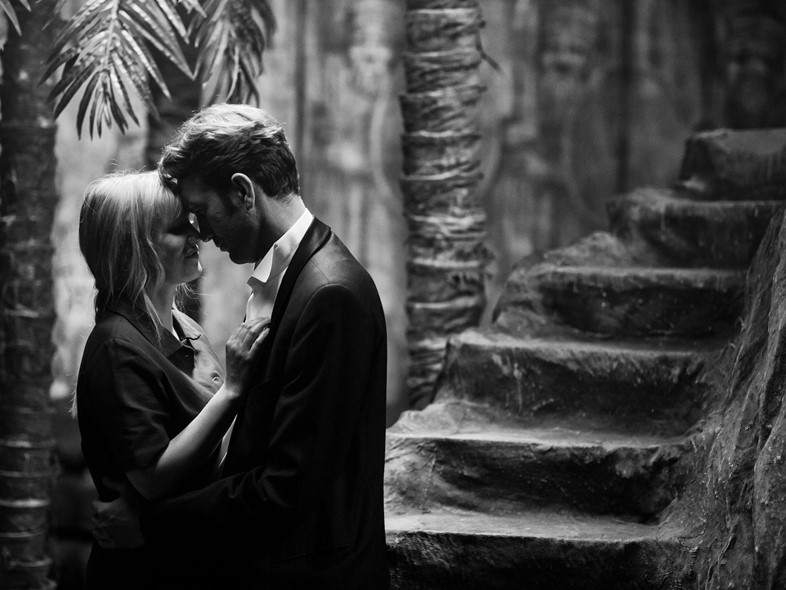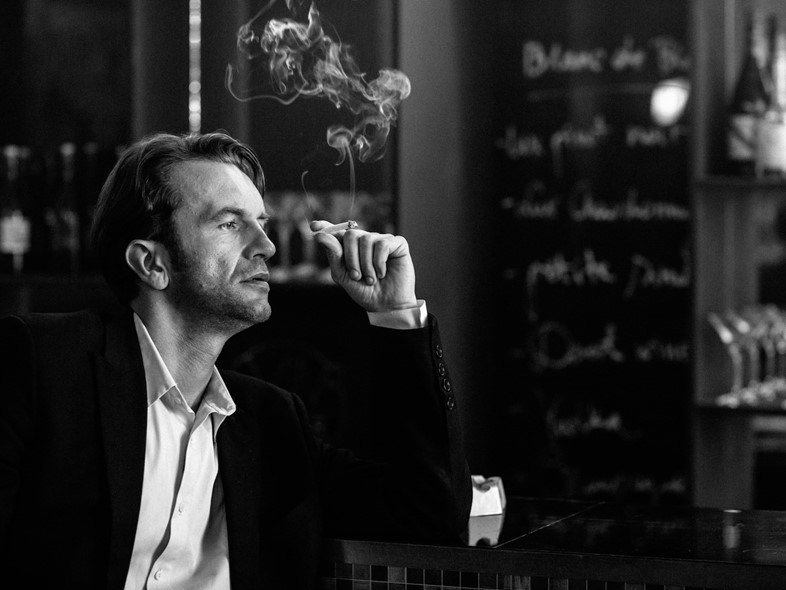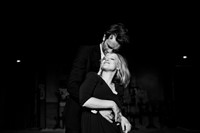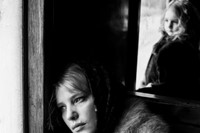We meet the stars of Paweł Pawlikowski's award-winning new drama, Cold War, to discover the story behind its masterful realisation
In 2015, Polish director Paweł Pawlikowski scooped his first Oscar for Ida, the stunning black-and-white tale of a young trainee nun in 1960s Poland, who sets out on a voyage to unearth the secrets of her war-torn past. Speaking to the director prior to the film’s release, he told me with a chuckle that it was like a “fairy tale” that this “tiny Polish film… black and white with unknown actors” was his most commercially successful film to date – his previous three features, Last Resort, My Summer of Love, and The Woman in the Fifth were all made in English, and starred renowned actors.
Fast forward three years and the auteur, now 60, has returned with Cold War, another Polish film, also shot in monochrome, starring (admittedly more famous) Polish actors. The passionate and tumultuous love story between a mischievous and mysterious young performer named Zula (a spellbinding Joanna Kulig) and a brooding composer and pianist called Wiktor (Tomasz Kot), it is an equally breathtaking accomplishment, both visually and emotionally, and won Pawlikowski the Best Director award at this year’s Cannes.
The film is dedicated to, and loosely inspired by, Pawlikowski's own parents – an unlikely pairing of a blonde bombshell dancer and an older, more serious doctor – whose romance was defined by its on-again-off-again nature. Zola and Wiktor's tale begins at the end of World War Two, in a vast, ramshackle country estate, where Wiktor and his producer (and then-lover), Irena, are auditioning young hopefuls to perform in a touring show of traditional Polish song and dance. Sparks fly they second the pair lock eyes, and soon – with all the rhythm and intensity of the troupe’s swirling folk dances – we find ourselves swept along with the spirited chanteuse and her handsome composer, as they drift apart and back together in a waltz that traverses decades and continents.

Much as with Ida, Pawlikowski refuses to spoon-feed the viewers, leaping forward in time on numerous occasions and leaving us to fill in the gaps aided by extraordinarily nuanced performances from the film’s two leads. “This jumping story only happened for the audience,” Kot tells me over the phone, a week before the film’s UK release, when I ask how this stop-start storyline affected his process. “There was I think only one jump in the script, because in fact we shot around 30 or 40% more footage – scenes that didn’t make it into Paweł’s final work – so for Joanna and I the narrative was more transparent.” Another factor he credits for his and Kulig’s naturalistic embodiment of their roles is the film's lengthy rehearsal period. “We spent six months rehearsing before the three-month shoot,” he explains, “and then we shot more or less chronologically, which is how Paweł prefers to work.”
This meant that both he and Kulig had to cancel all other theatre, film and television work scheduled during these months in order to devote themselves entirely to the project. “For Paweł it was very important to have that time – and we did it for him because he’s a great director,” Kulig – somewhat of a muse to Pawlikowski, who created this part, as well as smaller roles in The Woman in the Fifth and Ida, specially for her – reveals. For her co-star, this meant learning how to pass as a lauded pianist and conductor, but Kulig’s own task – dancing to a professional standard – required even more exertion. “For half a year, I trained twice a week with a real dance group in Poland, Mazowsze – the group that inspired the one in the film,” she explains. “It was really hard, but very rewarding when I finally managed to pull it off!” The rest of the rehearsal time, she says, was spent “talking, reading the script, changing the scenes, looking at documentation of that time in Poland, during the Cold War – old photos and so on. I looked a lot at Marilyn Monroe and Arthur Miller's relationship – she was beautiful and childlike, and destructive in some ways, and he was educated and smart, a bit like Zola and Wiktor. Paweł also told me to study the acting of Lauren Bacall. By the time we started filming we were really comfortable with the era and the style – with the challenges our mothers' and grandmothers' generations faced at this time – and we felt calm and ready to create.”

Once filming began, Pawlikowski was as rigid with his schedule as he had been during rehearsals. “We would film for five days and then Paweł would edit over the weekends,” Kulig tells me. “And during that time he would invite us into his room and ask our opinions on scenes; it was great – he wasn’t just treating us as actors – he was inviting us to create with him, which is very unique.” The director was also entirely singular in his vision, often asking the cast and crew to repeat a scene over 20 times to get the camerawork and lighting right, while demanding a natural performance from his cast – “he doesn’t like you to have too much acting style,” Kulig notes. It is Pawlikowski’s sense of certainty, as well as the air of collaboration he cultivates on set, that elicits an implicit trust from those he works with. “He really knows his mind,” says Kot. “When someone asked him, ‘Why black and white?’ he said, ‘Because our time – the 50s in Poland – has no colour; in our memories, in every history book, every newspaper, it’s only black and white. America at this time had colour, but if you were to make something about 50s Poland in colour, you’d be making something fake.’”
The monochrome palette certainly lends a chilling austerity to the often bleak, rubble-strewn scenes shot in Poland as Communism tightens its grip on the country; while in the jazz clubs of Paris – as well as Wiktor’s covetable, bohemian loft apartment overlooking the city’s rooftops – it conjures a Brassia-esque romanticism. The camerawork, steered by cinematographer Lukasz Zal, is similarly artful; in one particularly memorable scene – set in a Paris dive bar – Zola, reminiscent of Brigitte Bardot in And God Created Woman, gets up and dances with a burgeoning energy to Rock Around the Clock, finally clambering onto a table for her grand finale, while the camera follows her boundlessly, taking in every movement. “When we started the movie, we used a stable camera – one that didn’t move,” Kot recalls, “and I asked Paweł, ‘Will it be a still camera for the whole movie?’ He said, ‘No, because the camera is like your love!’”

If this sounds aggrandising, it isn’t; I defy you to find a more lyrically realised film from this year’s many accomplished offerings – or one with such an impactive ending. (“Halfway through shooting, Paweł said, ‘I’ve written the ending,’ and we said, ‘Alright, let’s see this ending!’” Kot remembers of the final scene, “and it was like the best quality of poetry; I said, ‘Oh my God, let’s do everything for this Paweł’”.) Cold War sees Pawlikowski the conductor of his own brilliant orchestra, juxtaposing music and silence, dialogue and gesture, stillness and motion, packed concert halls and rolling landscapes, to conjure a masterpiece that makes you feel all the feels in its brief 85-minute duration – its overall effect at once universal and entirely original. “Paweł kept saying, ‘The film has to be magic, we are making something different,’” Kulig enthuses. “The film has done so well in Poland, even with younger viewers, which is amazing,” she reflects happily, “but it has also received really good critical responses globally. So this story – set in a very specific time and place, telling a part of Polish history – has really resonated, which shows that Paweł's way of working really works.”
Cold War is in cinemas nationwide now.






